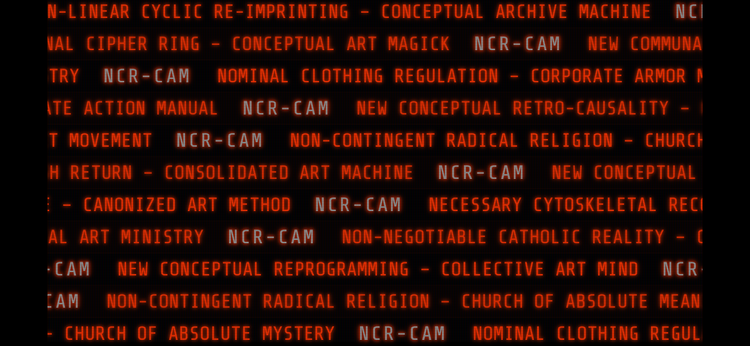Unified OS (UOS)

A public, peer‑reviewable compendium outlining the philosophy, architecture, security model, and 2027 launch plan for a modular, AI‑integrated, cross‑device operating system designed to run everything. (Ai drafted, 0.1)
Draft v1.0 • Last updated: August 23, 2025 • Target GA: September 2027
Microkernel/Hypervisor Object‑capabilities AI Co‑pilot Cross‑ecosystem Security by Isolation
Abstract
UOS proposes an operating fabric that unifies today’s fragmented ecosystems (Windows, Linux, Android, and more) into a single, secure, AI‑augmented environment. It uses a hybrid microkernel + hypervisor core to isolate and orchestrate multiple “OS personalities,” presenting all apps as first‑class citizens in one desktop. The system defaults to local‑first processing, strong capability security, and audited AI tool use. This document is published for open peer review by implementers and reviewers of operating systems.
Goal: Replace all daily computing with one platform that swallows existing devices and data, runs legacy and modern apps side‑by‑side, and scales from pocket devices to workstations.
Contents
1. Vision & Objectives
2. Features & Use Cases
3. Competitive Positioning
4. System Architecture
5. Unified GUI & UX
6. Performance Strategy
7. Security Model
8. Implementation Strategy
9. Go‑to‑Market Plan
10. Open Peer Review
Appendix: MVT Checklist & Glossary
1. Vision & Objectives
1.1 Core Vision
UOS is a universal OS that unifies ecosystems instead of replacing them. It presents one secure desktop where apps from any origin run natively and interoperate, wrapped by an AI co‑pilot that understands user intent and policy.
1.2 Objectives
- Seamless Compatibility: Run apps from major OS families with minimal overhead.
- Unified Experience: One launcher, one windowing system, one file space, one clipboard.
- Security by Design: Isolation first; object‑capabilities for precise permissions.
- AI‑Native: Local‑first LLM services with model attestation and tool guardrails.
- Data Sovereignty: Local encrypted vault; E2EE sync; observable data flows.
- Device Mesh: Identity‑centric sessions roaming across personal devices.
Low‑Fi Path vs 2027 Flagship
- Low‑Fi (now): Linux+KVM host, QEMU guests (Windows/Android), X11/Wayland compositor, basic window capture; works slower but demonstrates value.
- 2027: Tuned type‑1 hypervisor, GPU‑paravirtualization, per‑app window remoting, per‑service DIDs, guarded AI tools, hot‑swappable modules.
2. Features & Use Cases
2.1 Cross‑Ecosystem Apps
Run Windows, Linux, and Android apps side‑by‑side. Apps appear as native windows in the Unified GUI, sharing clipboard, drag‑and‑drop, and a common file space.
2.2 Data Migration (“Swallowing”)
First‑run importers ingest user data from existing machines (NTFS/APFS/ext4), browsers, mail, cloud drives. Files are rehomed into a unified library structure.
2.3 AI Assistant
System‑level co‑pilot executes multi‑app workflows, summarizes activity, and generates ad‑hoc interfaces. All AI tool calls are logged and policy‑checked.
2.4 Device Mesh
Personal devices authenticate into a mesh. Workloads (builds, renders) shift across devices under a global policy and identity.
2.5 Personas
- Developer: One OS to build/test across environments; per‑project compartments.
- Creator: All creative tools together; predictable color/profile and device routing.
- Analyst: Local LLMs over regulated data; clear audit trails.
3. Competitive Positioning
UOS positions as a superset platform, embracing other ecosystems as first‑class modules. Instead of a walled garden, UOS is an integration garden with strong isolation and policy.
Risk: App performance and UX fidelity must meet or exceed native. Strategy: prioritize per‑app window remoting, paravirtual I/O, GPU virtualization, and fast resume.
4. System Architecture
4.1 Layered Model
Unified GUI & UX • AI Co‑Pilot • Policy & Telemetry
UOS Core Services: FS, Net, Identity (DID/Passkeys), Update, Crypt
Compatibility Domains: Windows • Linux • Android • (Future)
Microkernel/Type‑1 Hypervisor • Drivers (isolated) • Secure Boot
4.2 Compatibility Domains
- Windows: Start with HW‑accelerated VM (virtio), add Wine/Proton paths for select apps.
- Linux: Native + containers for per‑distro toolchains.
- Android: AOSP VM/container with desktop‑class windowing.
- Extensible: Future personalities as modules.
4.3 Shared Services
Unified file space (virtio‑fs/9P), shared clipboard, device assignment, centralized networking and storage, secure IPC between domains.
5. Unified GUI & UX
- Single launcher and settings surface for all apps.
- Per‑app window remoting: foreign apps render into the UOS compositor.
- Consistent theming and input; accessible controls and notifications.
- Secure interop: drag‑and‑drop and file dialogs traverse domains via policy‑gated bridges.
Accessibility & Internationalization
WCAG‑aware color/contrast, full keyboard nav, screen reader maps; RTL scripts, IME, and locale packs available offline.
6. Performance Strategy
- Virtio paravirtual drivers for network/disk/graphics; CPU pinning for foreground domain.
- Domain on‑demand: suspend/resume guests; snapshot cold‑start.
- Memory deduplication (KSM) and shared page caches.
- GPU passthrough/mediation for 3D apps; VirGL/ANGLE for others.
Target: Foreground app latency within 5–10% of native on 2027 mainstream hardware; background domains power‑sipped.
7. Security Model
7.1 Principles
- Isolation first: Each domain is a blast‑radius boundary.
- Object‑capabilities: No ambient authority; per‑app scoped handles.
- Measured boot & attestation: Verify core and domains before trust.
- Local‑first AI: Signed models; guarded tools; audit logs.
7.2 Human Safety Levers
- Border Mode: minimal profile; decoy workspace on duress PIN.
- Kill‑Radio: hard RF off; offline updates via QR/USB.
- Step‑Up Auth: high‑risk actions require extra factor.
7.3 Governance
Public audits, bug bounties, transparency logs for OS, apps, and models. Business model avoids behavioral ads.
8. Implementation Strategy
8.1 Components
- Linux+KVM or Xen base; QEMU/Libvirt orchestration.
- Wayland compositor (customized); container tech for Linux apps.
- Wine/Proton paths; AOSP/Android‑x86 VM or container.
- Policy engine (Rego‑style); cryptography and update services.
8.2 Phased Execution
- 2025: Bare‑metal prototype; dual‑domain demo.
- 2026 H1: Alpha — single session, multi‑domain app windows.
- 2026 H2: Beta prep — Android runtime, importer tools, AI preview.
- 2027 H1: Public Beta — performance tuning, hardware broadening.
- 2027 Sep: GA 1.0 — stability, docs, partner images.
Low‑Fi Build (works today)
# Host
Linux (LTS) + KVM + virtio-fs
# Guests
Windows 11 VM (virtio), Android (AOSP) VM, Linux containers
# GUI
KDE/GNOME compositor + remote window bridges (RDP/VNC/Waypipe class)
# Interop
Shared libs (virtio-fs/9P), policy‑gated clipboard and file dialogs
# AI
On‑device small LLM; attested model updates; journaling of tool calls
9. Go‑to‑Market Plan
9.1 Early Adopters
Target developers, IT, and creators. Channels: OSS communities, dev conferences, privacy forums. Offer cloud demo images for zero‑install trials.
9.2 Partnerships
- OEMs and boutique laptop vendors for pilot SKUs.
- Android app store integration; Linux flatpaks.
- Cloud desktop partners for streamed trials.
9.3 Messaging
“The last OS you’ll need—because it runs everything you already use.” Show real workflows: Windows CAD + Linux data science + Android comms, unified by AI.
9.4 Post‑Launch
Community governance, SDK for native UOS apps, continuous compatibility updates, and hardware optimization track.
10. Open Peer Review
This draft is published for public, expert peer review. Suggested review tracks:
- Security: threat model completeness, ocap enforcement, hypervisor isolation.
- Perf/UX: input latency, GPU virtualization, window remoting fidelity.
- Compat: Windows/Android app coverage, file/driver edge cases.
- AI: model attestation, tool guardrails, provenance and logging.
Known Unknowns: macOS/iOS compatibility paths are exploratory and may depend on hardware and licensing constraints.
Appendix
A. Minimum Viable Trust (MVT) Checklist
- Measured boot + secure element anchoring passkeys and app signatures.
- Microkernel or hardened host + ocap sandboxing; userland memory safety.
- Local‑first encrypted datastore; E2EE CRDT sync; per‑app vaults.
- Zero‑trust overlay networking; oblivious DNS.
- On‑device LLM; attested model updates; retrieval limited to approved data rooms.
- Reproducible builds + transparency logs; A/B updates and rollback.
- Mission modes (Border/Kill‑Radio/Duress) + step‑up auth for irreversible actions.
- One‑tap revocation for apps, models, and keys.
B. Glossary
- Ocap (Object‑capabilities): Security model granting precise, explicit capabilities to processes.
- E2EE: End‑to‑end encryption; only endpoints can decrypt.
- CRDT: Conflict‑free replicated data type for offline‑first sync.
- Type‑1 Hypervisor: Bare‑metal VM manager that runs directly on hardware.
C. License
© 2025 UOS Authors. This draft is shared under CC BY 4.0 for open peer review and adaptation with attribution.
Feedback welcome. Please include section IDs and concrete suggestions when filing issues or comments.






Member discussion